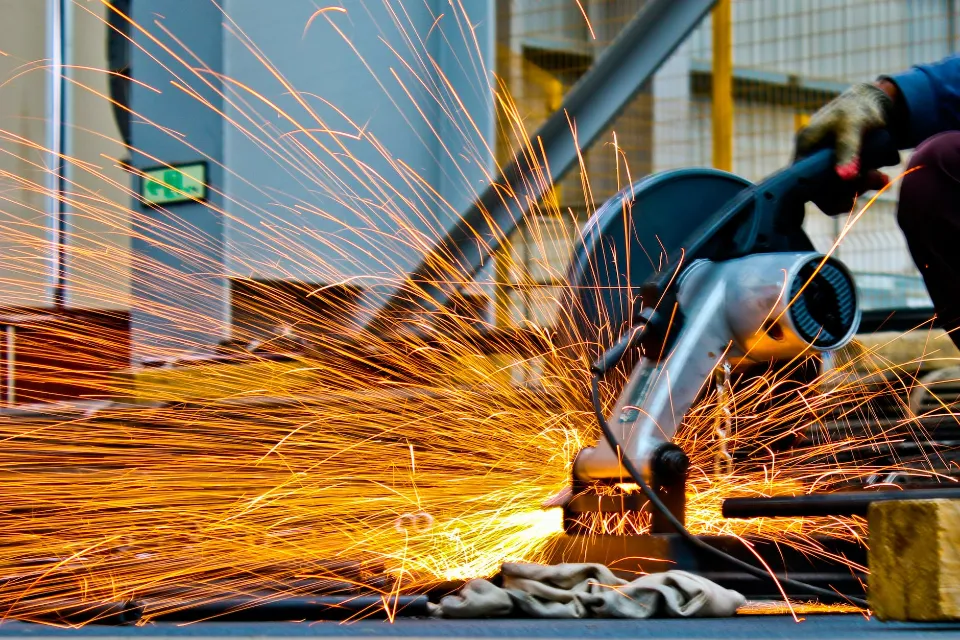
A peristaltic pump also referred to as a hose or tube pump works using positive displacement. More fluid can enter because the tubing expands as the roller passes over it and creates a vacuum. Continue reading, you will know more about peristaltic pump including how it works, how to use and how to control them.
Table of Contents
What is a Peristaltic Pump?
Other names for peristaltic pumps include roller pumps, tube pumps, and hose pumps. In a wide range of industries and applications, they offer a dependable and straightforward solution for moving almost any fluid.
An elastomeric hose makes up the center of the pump. By completely enclosing the fluid in this tube, the risk of product contamination is all but eliminated. To meet the chemical compatibility requirements for each application, Albin Pump manufactures a variety of tough tube or hose materials.
Better lubrication of the hose is made possible by not machining the external hose surface after extrusion. During use, the lubricant lessens friction on the hose and dissipates heat. As a result, the hose will last longer and require less maintenance.
What is a Peristaltic Pump Used For?
A variety of fluids, including cosmetic lotions, abrasive slurries like lime milk in mining applications, or sodium hypochlorite at water treatment plants, can be transferred, dosed, or metered using peristaltic hose pumps.
For a variety of applications, including food and beverage processing, wastewater applications, and chemical processing, peristaltic pumps provide a flexible solution. Pump flow can be altered to precise meters or dose fluids when combined with variable speed drives or a PLC.
Regardless of the industry, Albin Pump offers a broad selection of pumps that can be configured to meet your fluid transfer requirements.
What Are the Types of Peristaltic Pumps?
Peristaltic pumps come in two different varieties: hose pumps and tube pumps. Hose pumps are ideal for pumping extremely solid materials, while tube pumps are ideal for lower flow rates, are fully programmable, and have the option of multiple heads.
How Do Peristaltic Pumps Work?
In a peristaltic pump, the rotating rollers or shoes compress the tube or hose, creating a vacuum that draws fluid through the tube.
Since only the pump tube or hose comes into contact with the fluid, there is no chance that either the fluid or the pump could become contaminated. The animation demonstrates how fluid is drawn into a pump tube, caught by the pump head roller, and then released when the following roller passes over the tube. A vacuum is created in the tube as the rollers spin, drawing in more fluid for the subsequent roller pass.
The pump’s positive displacement action results from the tube completely closing when it is occluded (squeezed) between the roller and the track, preventing backflow and eliminating the need for check valves when the pump is not in use.

What Are the Advantages of Using Peristaltic?
Nothing but the tube touches the fluid with peristaltic pumps, which is their main benefit. They eliminate the possibility of the fluid or the pump becoming contaminated because only the inner bore of the tube makes contact with the fluid.
In the animation, fluid is drawn into a pump tube, caught by the pump head roller, and then released as the next roller passes over the tube. For the subsequent roller pass, more fluid is drawn into the tube by a vacuum created as the rollers rotate.
The pump’s positive displacement action results from the tube completely closing when it is occluded (squeezed) between the roller and the track, preventing backflow and obviating the need for check valves when the pump is not in use.
What Are the Peristaltic Pumps – Features and Benefits?
When a product is particularly corrosive, abrasive, or viscous, peristaltic pumps are excellent problem-solving pumping solutions. The only component that needs maintenance is the hose or tube due to the lack of valves, seals, and glands in these devices. Additionally, peristaltic pumps have a delicate pumping action that makes them perfect for delicate cell cultures and polymers that are sensitive to shear. Finally, since the interior of the tube or hose is the only part of the pump that comes into contact with the fluid being pumped, its interior surfaces are simple to sterilize and clean.
- Seal-less design
- Low maintenance costs
- Dry running and self-priming
- Gentle pumping action
- High suction lift
- Abrasion resistant
- Solids handling
- Reversible
- No slip
- Accurate dosing
Where Are Peristaltic Pumps Used?
In many different industries, peristaltic pumps are employed. They are frequently seen pumping highly solidified slurries from the mining sector, ad and biogas plants, and sewage treatment facilities, all of which deal with highly abrasive, grit- and viscous-containing fluids. The tube pumps are more frequently utilized in laboratories or with chemicals.
How to Use a Peristaltic Pump?
Peristaltic pumps are incredibly easy to install and operate. To accommodate particular pumping applications and fluids, they are constructed with particular hose materials. To make sure your pump will meet your application needs, check the model number and piping material when you get it. At the connection points, easily recognizable color indicators can be used to determine the hose material.
Because peristaltic pumps can be quite large, it is important to secure the pump by bolting it to the ground or other rigid structures. To make replacement hose installation and removal simple, place the pump so that there is enough space between the pump’s inlet and outlet and any fixed structures.
Flexible, as opposed to rigid, piping is ideal for suction and discharge connections. It’s crucial that the inlet/outlet piping has at least the same diameter as the pump hose, if not more. We advise installing a pulsation dampener with your peristaltic pump if the outlet piping has numerous bends that could result in pressure loss or severe pulsation.
How to Control a Peristaltic Pump
Peristaltic pumps are constructed with a particular motor, reducer, and pump head intended to operate at a specific flow rate and pressure. You can operate the pump in a number of different ways with this straightforward design. Line start on/off controls is a convenient way to manage your peristaltic pump. The peristaltic pump can be managed through a PLC if you need more control.
Electric pumps make up the peristaltic pump. It can be connected to a VFD (variable frequency drive) control to change speeds for an even higher level of control.
Conclusion
Do you know more about the peristaltic pump? A peristaltic pump also referred to as a hose or tube pump works using positive displacement. A flexible tube is compressed against the pump housing as it is fed fluid by rotating rollers. To let in more fluid, the roller expands as it passes over the tubing and creates a vacuum. It is most often used to move fluids that are sterile or aggressive chemicals.



